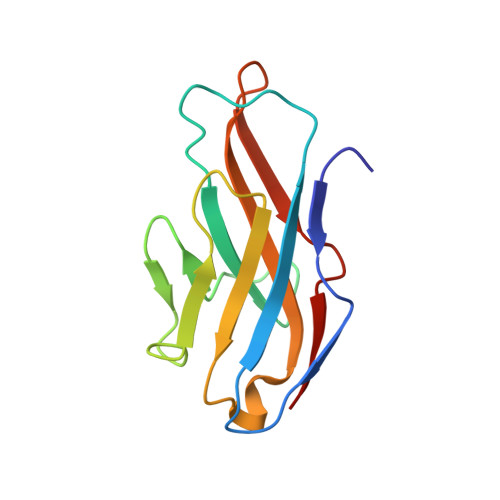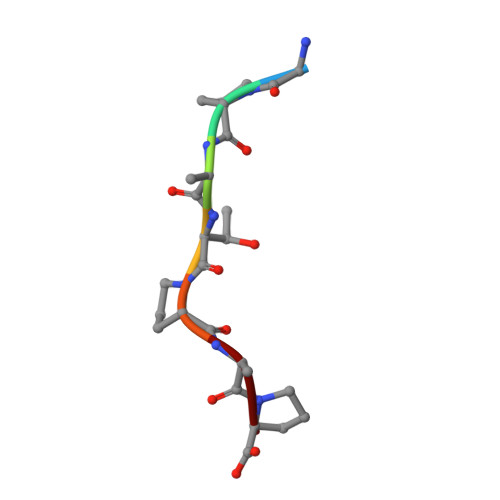Structural basis for simultaneous recognition of an O-glycan and its attached peptide of mucin family by immune receptor PILR alpha
Kuroki, K., Wang, J., Ose, T., Yamaguchi, M., Tabata, S., Maita, N., Nakamura, S., Kajikawa, M., Kogure, A., Satoh, T., Arase, H., Maenaka, K.(2014) Proc Natl Acad Sci U S A 111: 8877-8882
- PubMed: 24889612
- DOI: https://doi.org/10.1073/pnas.1324105111
- Primary Citation of Related Structures:
3WUZ, 3WV0 - PubMed Abstract:
Paired Ig-like type 2 receptor α (PILRα) recognizes a wide range of O-glycosylated mucin and related proteins to regulate broad immune responses. However, the molecular characteristics of these recognitions are largely unknown. Here we show that sialylated O-linked sugar T antigen (sTn) and its attached peptide region are both required for ligand recognition by PILRα. Furthermore, we determined the crystal structures of PILRα and its complex with an sTn and its attached peptide region. The structures show that PILRα exhibits large conformational change to recognize simultaneously both the sTn O-glycan and the compact peptide structure constrained by proline residues. Binding and functional assays support this binding mode. These findings provide significant insight into the binding motif and molecular mechanism (which is distinct from sugar-recognition receptors) by which O-glycosylated mucin proteins with sTn modifications are recognized in the immune system as well as during viral entry.
Organizational Affiliation:
Faculty of Pharmaceutical Sciences, Hokkaido University, Sapporo 060-0812, Japan;

















